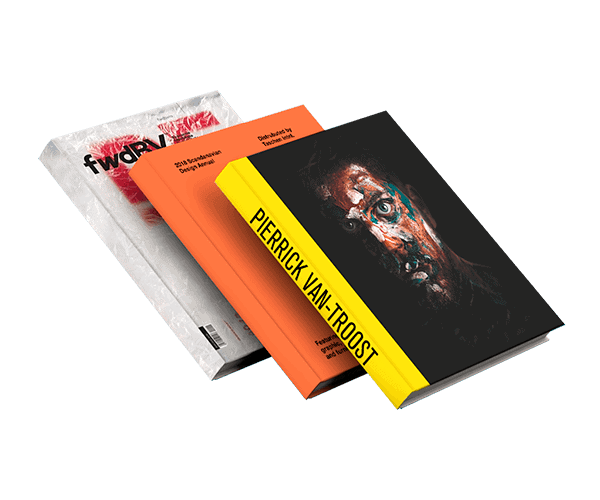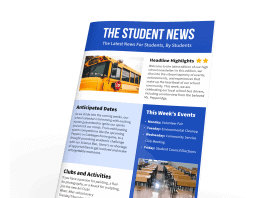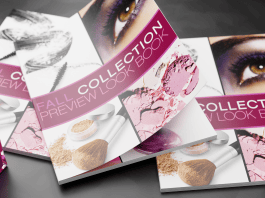Last updated on June 20th, 2024 at 04:47 pm
School yearbook printing requires many important decisions that affect the look and feel of the book. Should you use coated or uncoated paper? How thick should the paper be? Do you want the cover to be gloss or matte?
These are just some of the many considerations that go into the school yearbook printing process. Perhaps the most important is the type of binding you use. Here’s why: school yearbooks are meant to last a lifetime. They’re like a snapshot in time, capturing precious memories from a year in the life of every student in the school. Much more than just a roster of students, teachers, and administrators, a yearbook provides a window into what life was like at a certain point time that will never happen again.
There are four common types of yearbook binding, three of which are softcover options. These include PUR perfect bound, spiral bound and saddle-stitch. The fourth type is hardcover. When you want a sturdy, durable yearbook that will stand the test of time, hardcover is the obvious choice. However, school yearbook printing involves other factors as well, ranging from the number of pages in the yearbook to the budget for production and printing. Let’s take a look at the four different types of binding and which yearbooks they are best suited for.

Softcover Yearbook Binding
Hardcover binding has been the traditional choice for more than 200 years. There’s something about a sturdy hardcover that says this is a yearbook! Yet, there are many reasons for going with a softcover binding method. Softcover is a good choice when:
- The yearbook has between 60-150 pages
- Working with a limited budget
- A fast turnaround time is required
- Printing large numbers of the yearbook
School yearbook printing is a time-honored tradition. Yet, many in today’s younger generation of students want a yearbook that reflects the modern world. Softcover bindings offer a wide variety of design and print options that are ideal for schools and organizations looking for a yearbook that doesn’t fit the traditional mold.
Saddle-Stitched Binding
Saddle stitch booklet printing is an economical binding method generally used for yearbooks with a low page count. The pages are printed on large sheets of paper that are folded in half and nested inside each other. During the binding process, the pages are stapled together through the fold line of the yearbook. No adhesives are used. The page limits for Saddle Stitch Booklet Printing is 4-64 PDF pages.
Saddle-stitch doesn’t provide the durability of hardcover, but it does offer several advantages. It can be used with a wide variety of paper stocks and sizes, and the cover can be UV (ultraviolet) coated. This involves applying a liquid coating and curing it with ultraviolet radiation to provide a glossy, shiny finish. The UV coating resists abrasion and makes photos and other graphical images stand out from the page.
Yearbooks bound with saddle-stitch can be laid flat and remain open without having to hold the pages, although yearbooks with higher page counts won’t lay perfectly flat.
The saddle-stitching binding option is very cost-effective, yet it provides a polished, high-class look and feel despite the low binding costs.
EVA Perfect Binding
If you have a yearbook with more than 50 or 60 pages but still want a softcover, EVA perfect bound book printing is the ideal choice.
This binding method uses a very strong adhesive instead of coils or staples to hold the pages together. “Perfect” refers to the fact that the pages and the cover are all cut to the exact same size. This allows them to line up perfectly during the binding process without having to adjust for creep, a circumstance whereby the page margins get off kilter due to the nesting process.
EVA perfect binding works well with high-quality paper stocks, and the square spine allows for printing the school name and year on the spine. EVA perfect binding creates a professional look while adding strength and durability to the yearbook. The yearbook can be laid flat without damaging the pages.
Hardcover Binding
Hardcover is the premier binding option for school yearbook printing. When you want a yearbook that looks and feels like a traditional yearbook; when you want a yearbook that is built to last, you want Hardcover Book Printing. This method can be used for both low and high page count yearbooks. However, the stiffness makes it better suited for yearbooks with more than 50 to 60 pages.
At the same time, hardcover binding offers many options that allow you to customize your yearbook so that it looks traditional yet unique to your school or organization.
The hardcover is typically made with binder’s board, which is a single-ply, solid board made from various base stocks that usually ranges in thickness from .03 to .3 inches. It also has different weights, with a standard board weight of 90 pt. and going as high as 160 pt. To bind the yearbook, the pages are cut, folded and glued into a “book block,” which is then affixed to the cover using strong adhesive. At Printivity, we laminate the covers before gluing them to the binder’s board. We also bind the interior pages with PUR glue, the strongest available. The result is a sophisticated yearbook product that will withstand the test of time.
Hardcover yearbooks cost more and weigh more. However, many people consider the weighty feel to be an essential feature of a yearbook. When you want an impressive presentation that inspires an air of quality, hardcover binding is by far the best choice.
Ready to order?
Whether you choose softcover or traditional hardcover binding, Printivity provides school yearbook printing at the lowest prices, with fast turnaround times. We can print some yearbooks in as fast as 24 hours! For further assistance, please contact our customer service representatives at 1-877-649-5463!




